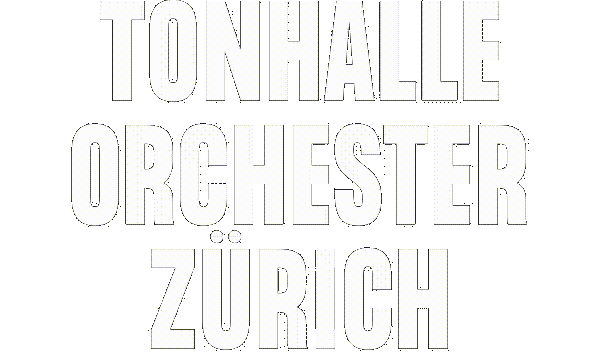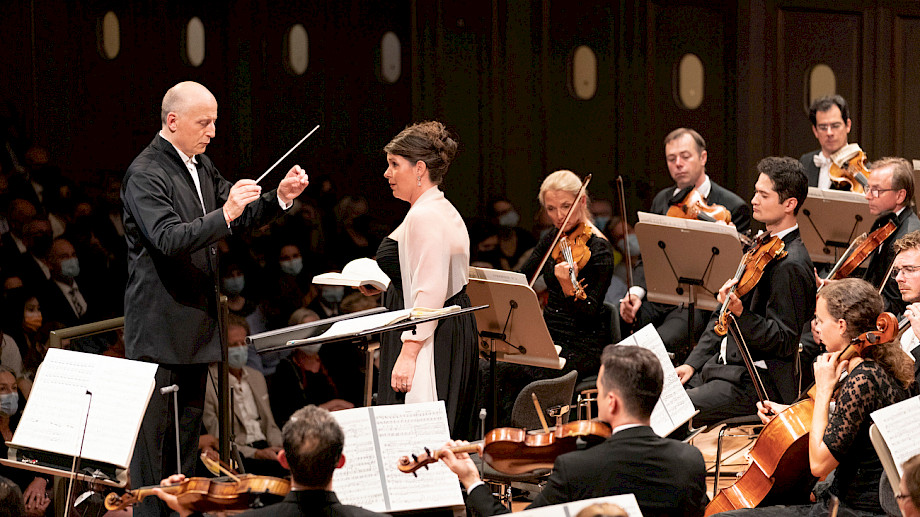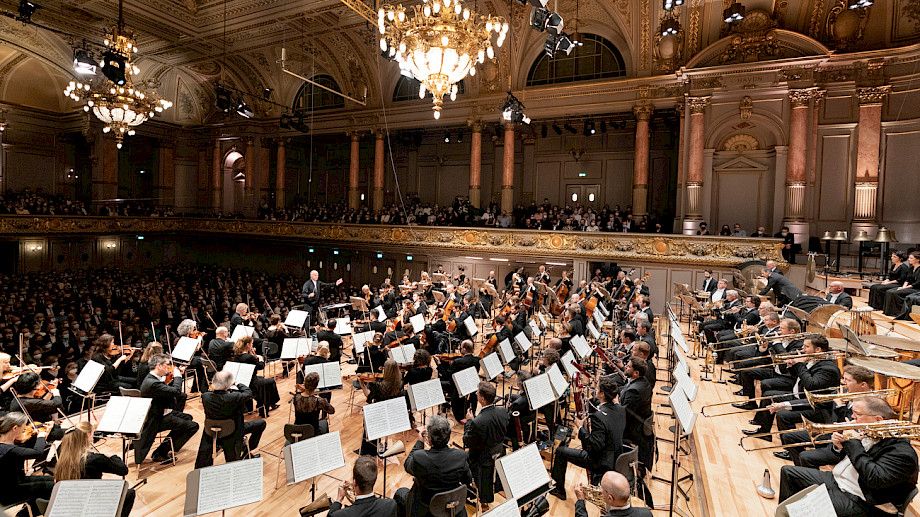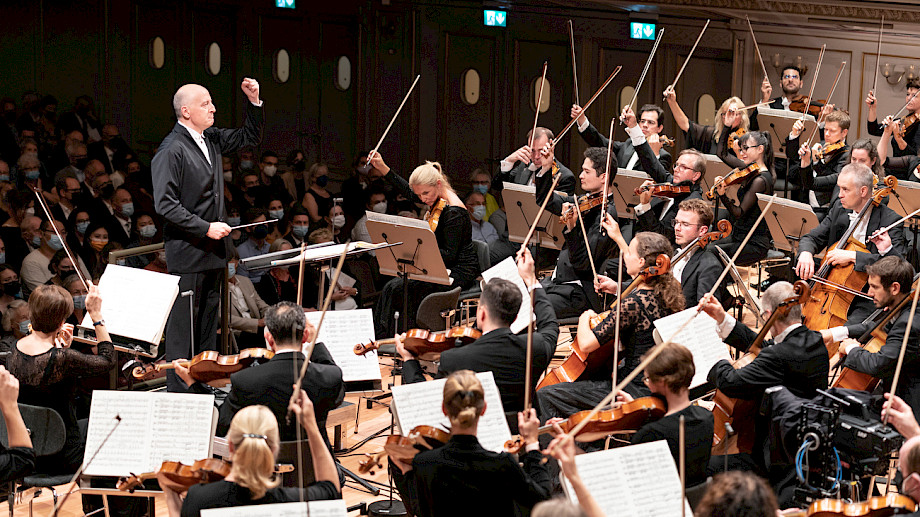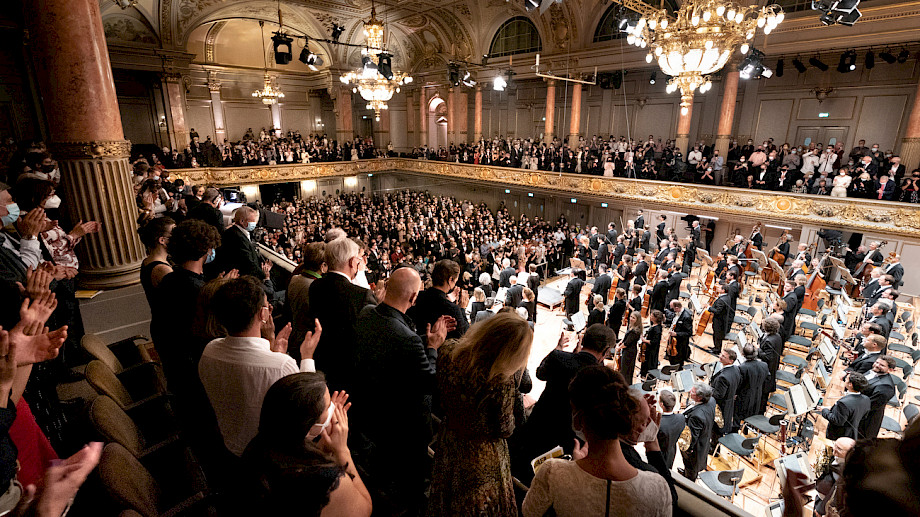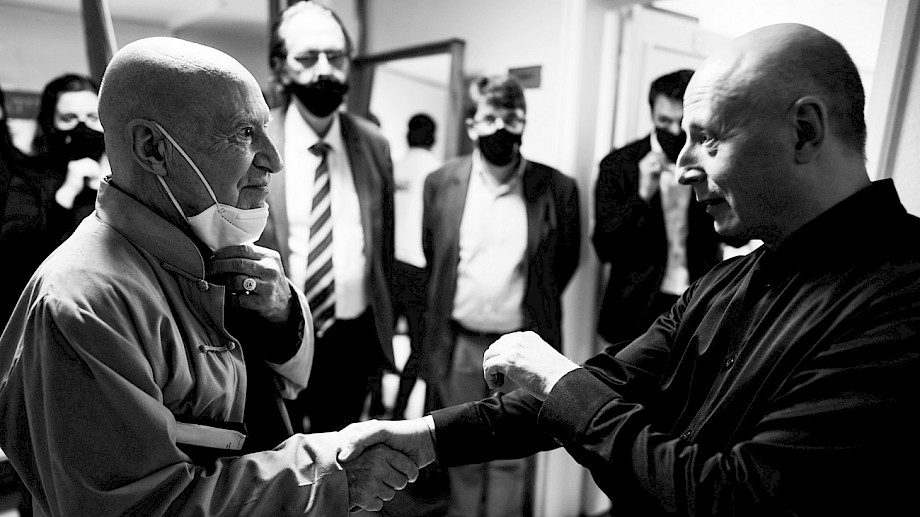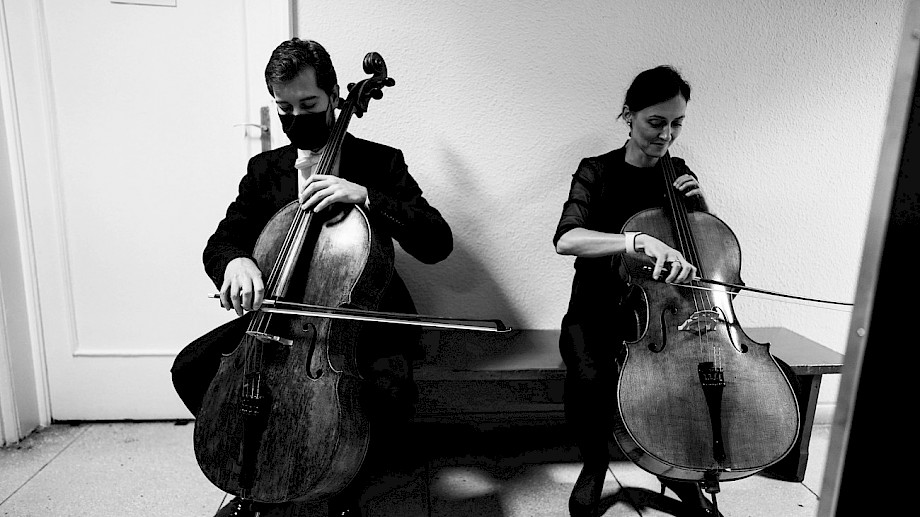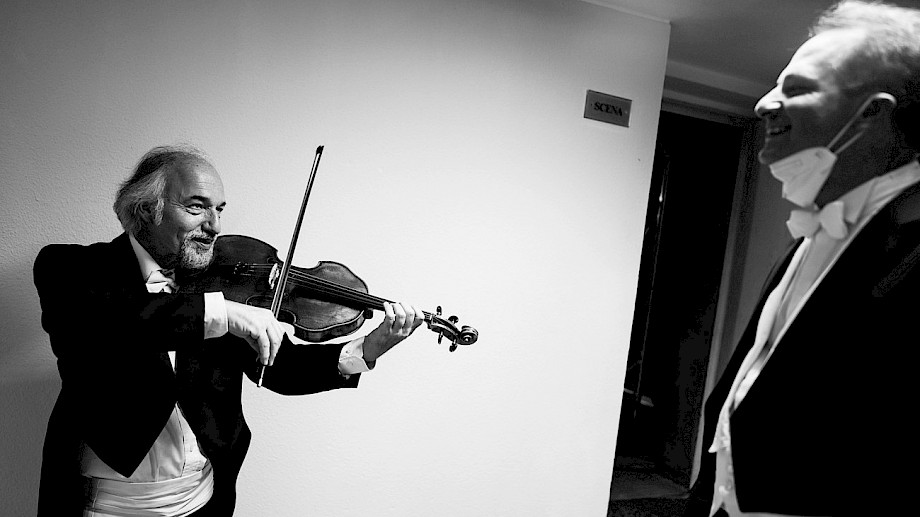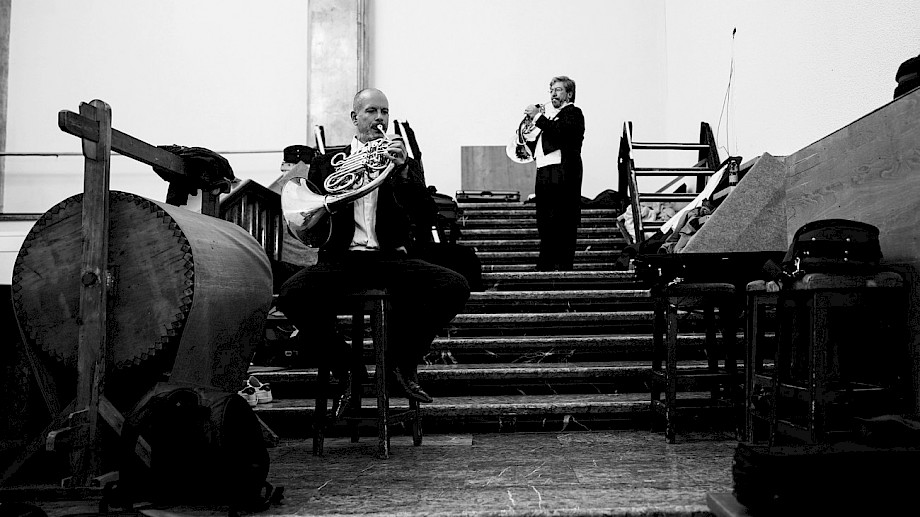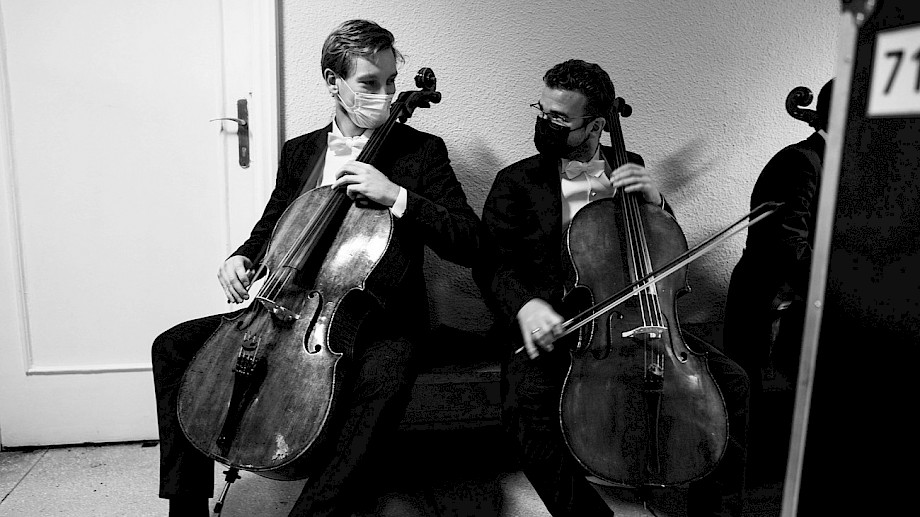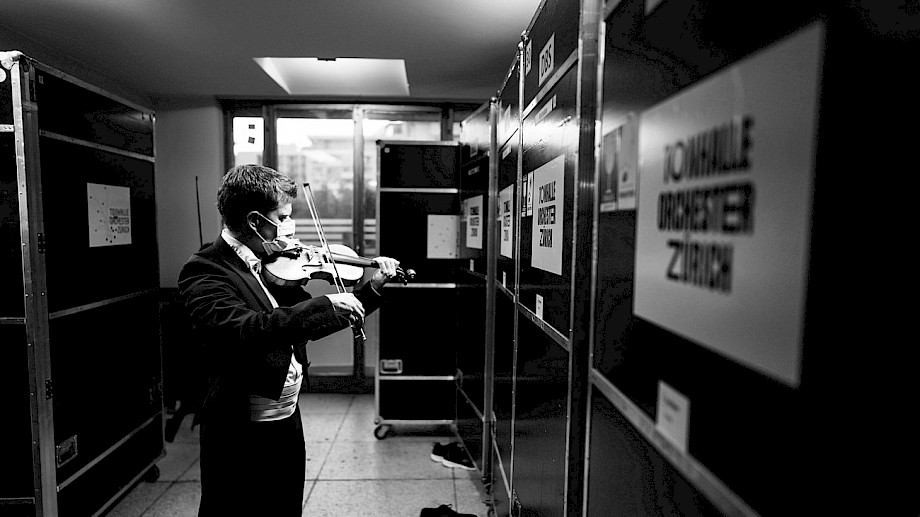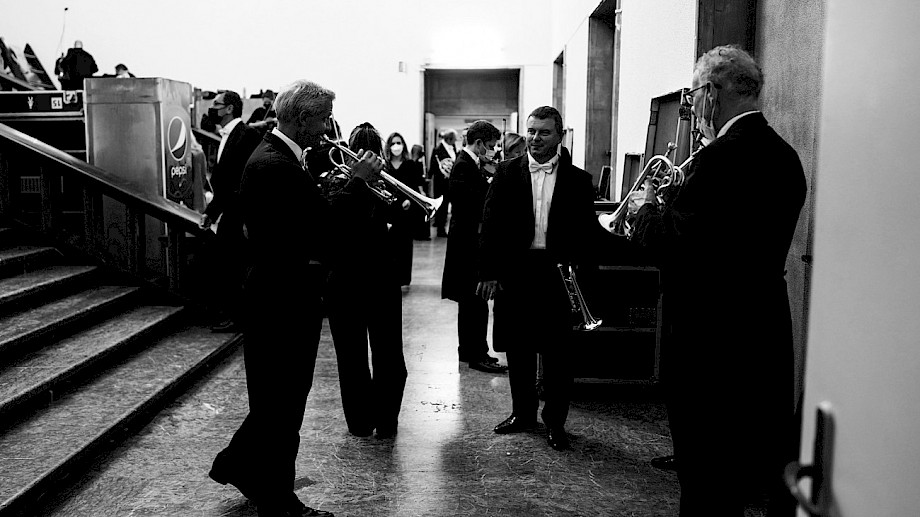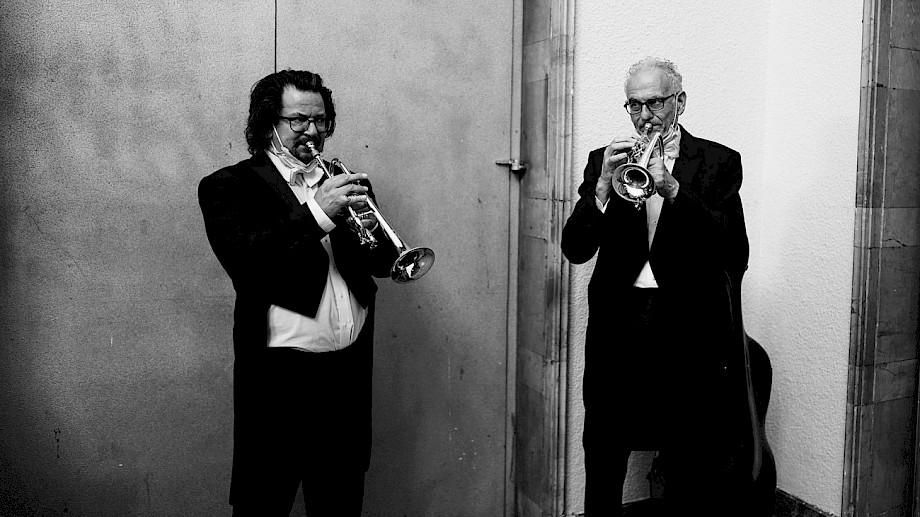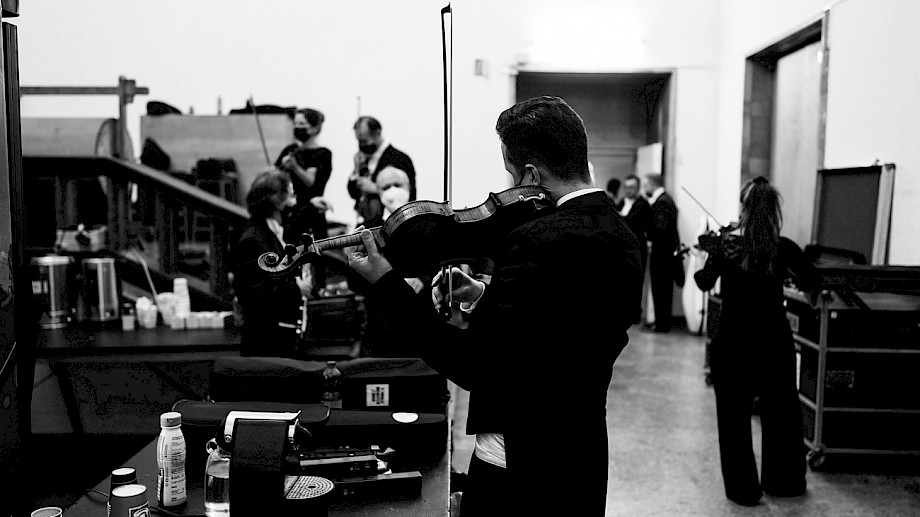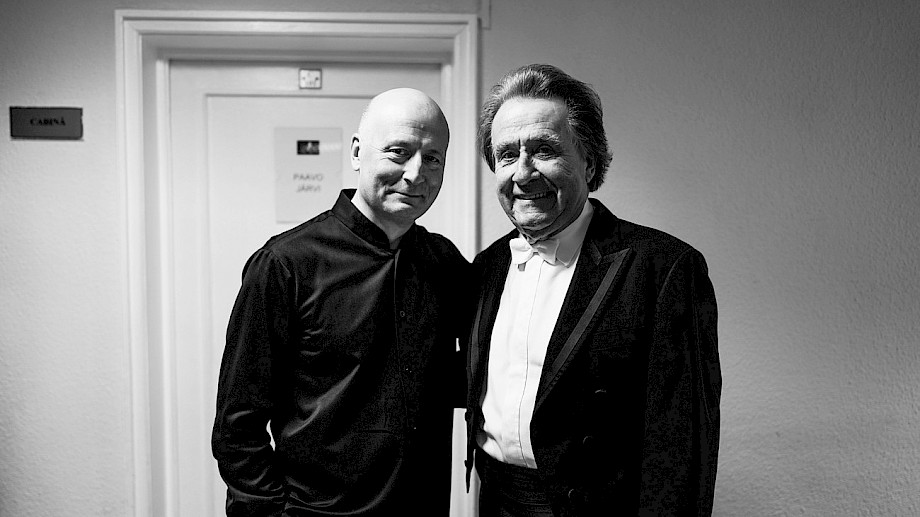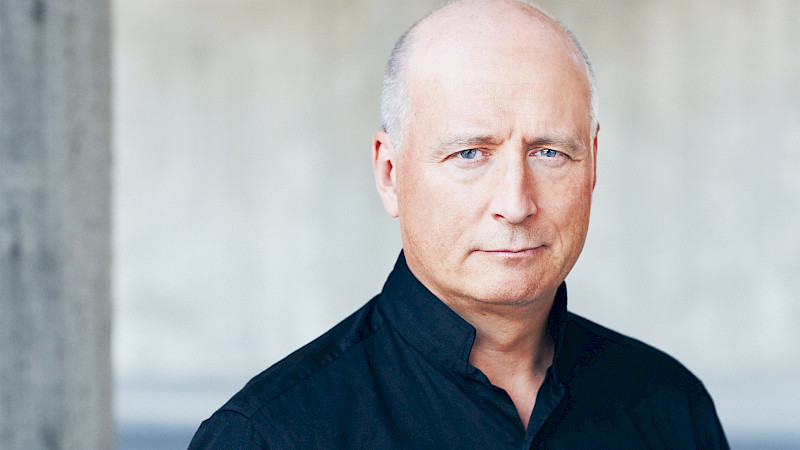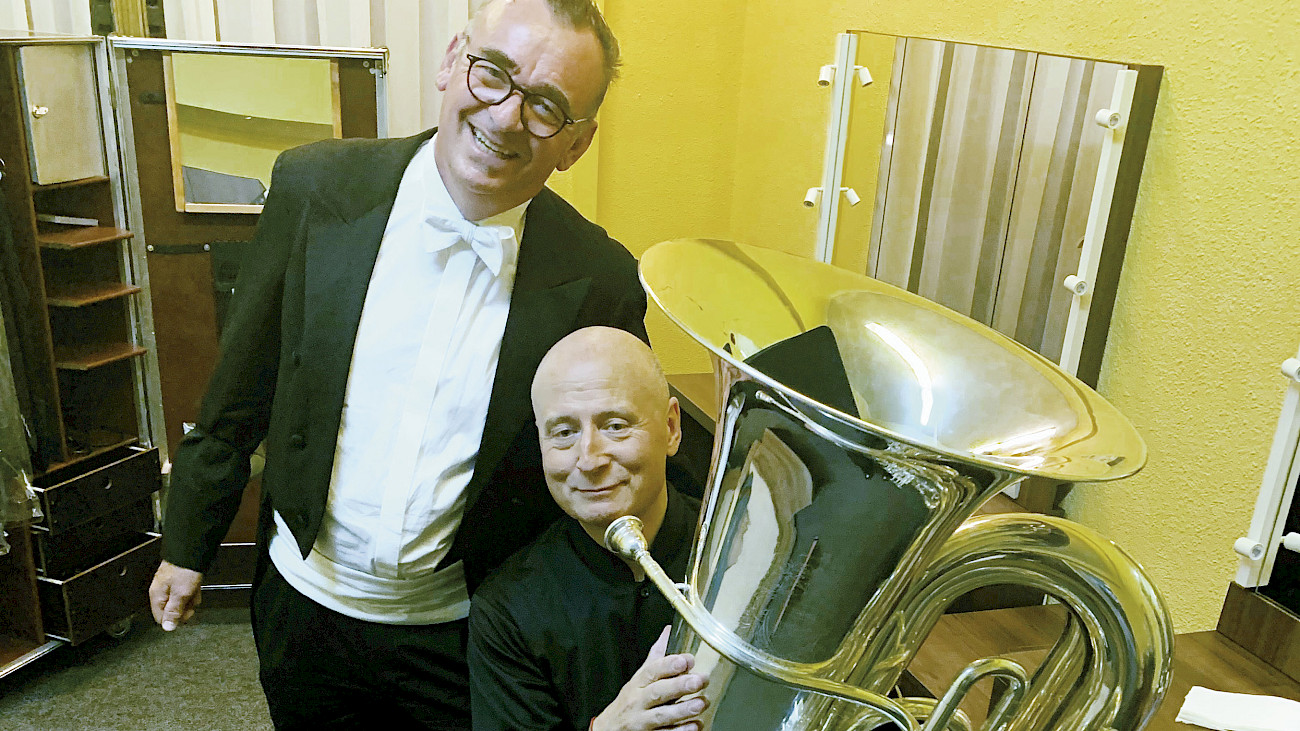
«I close my eyes and contemplate»
The Tonhalle-Orchester Zürich has been a part of Simon Styles’ life for 40 years. As its Solo-Tuba player he works in the back rows of the orchestra and close to the audience. From here he sees everything and everybody. He recently performed Mahler 3 during the opening concerts of the renovated Tonhalle Zürich for the last time in his career: A memorable and emotional experience.
This has been a great week to be a member of the Tonhalle-Orchester Zürich. A seminal week you might say. The grand old Tonhalle has thrown open it’s doors, finally, after an, in the end prolonged by a year, four year sojourn in Tonhalle Maag. The people of Zürich have responded – and how they have responded! The open days of 4th and 5th September were a huge success, and on the hour every hour for the two days they came in droves. Their reactions were positively heart touching to behold. I was stationed at the entrance to the Grosse Tonhalle to help and talk both to and at people, so I got them very much first hand. There were gasps even tears, there was generally a feeling of joy, of delight, possibly even of relief, given the times in which we live, to have a feeling of «coming home».
Finally though the big moment, the huge, sweeping, grandiose gesture which is Mahler’s 3rd symphony given, on consecutive evenings, to a sold out hall. Rehearsals start on Monday morning, on a very crowded stage. Mahler 3 is big in every way imaginable. Firstly there is its length which at about one hour 45 minutes makes it by a fair distance the longest symphony in the standard repertoire. Then there is the size of the forces required to perform it, an orchestra of about 100, a boys chorus, a women’s chorus, a solo alto, make for a very full stage. And so it is that even on the extended stage we are sitting very closely packed, like proverbial sardines in a tin. Thus I find myself sitting behind the eight horns, who start the symphony fortissimo, and in front and on ear level of the timpani (one of two sets used in the piece) of Beni Forster. I can only compare the noise level at the beginning of the piece as being possibly louder than those of the Swiss Airlines Airbus in which I now sit on take off! What a bizarre way to earn a living! Still it is all to the greater good I suppose and in the higher cause of art ...
The hall seems to have lost none of its bloom. Back in May we had a day of acoustic tests and, having sat down in my familiar position to warm up, I played my first note of the day, the first for four years in our hall. Oh the resonance! I spoke later with Professor Müller, our «in house» acoustician to ask what he had changed, to which his reply was «Nothing». Apparently the acoustic clocks have been «turned back» to before the refit of the hall, the floor and seats, of about 20 years ago when, for various reasons, the echo time was slightly reduced. This, although it bothered some of my colleagues a lot, I didn’t mind at all at the time as, when empty, the reverberation of the hall made rehearsing quite problematic – at times, and particularly with a big piece like Mahler 3, it seemed more as if we were rehearsing in the «Hallenbad» than a concert hall! The Tonhalle is notable in particular for its warmth of sound which comes largely (indeed from where else could it come?) its friendliness of bass frequencies. The simple reason for this factor is that the stage «sits», on the same floor as the public in the parket. As I understand these things, this apparently isn’t always the case, and often the stage is on a separate island of concrete or whatever. This, so I am told, means that the bass frequencies are transmitted through the floorboards so that they are felt, as much as they are heard in the auditorium. Well, all I can say is «Suits me fine!». I had to adjust my sound in Tonhalle Maag quite considerably it being much more friendly to the higher voices. I do remember at the beginning of our time in Tonhalle Maag practicing in the hall to try and get an impression of how it was going to be, and of realizing, quite quickly, that I was going to have to produce a thicker deeper sound to do my job as I like to do it while, at the same time, having the thought that I was in for three years of hard work. Well back in our hall, while I don’t expect an easy ride, it seems that my last, 40th year as a member of this great ensemble will be a fairly pleasurable journey.
Paavo’s style of rehearsing is to play fairly long chunks of the piece, before stopping to correct anything. Beware the conductor who stops a piece like Mahler 3 after seven bars, you know then that you are going to be in for a long week and you know that until the general, quite possibly until the concert you won’t have much of idea of the shape of the piece. It wastes time, is very tiring and keeping concentration becomes a big problem. Quite often one picks up the instrument only to put it down having not played a note, and when one’s instrument weighs about as much as the anchor of a Zürisee-Schiff, and you’re not as young as you once were ... Well you can imagine the frustration! I wonder at Paavo’s ability to, over such a huge length of time, maintain a tension and a flow, never sagging, never dragging, always flowing, even in the slowest, quietest and most transparent moments of which there are, I would say, more than the big voluptuous full orchestral tuttis.
The first movement starts out very forthright and quite bombastic, the power of nature sweeping all ahead, moments of sweetness and moments of seeming banality – there is a march which comes twice during the first movement which to my ears sounds more akin to John Philip Sousa, than Gustav Mahler. Then equally quickly the mood will change to one of pastoral etherealism – my part in the first movement is very demanding, at turns athletic, at turns physical and, because of the very low range in the big fortissimo tuttis, very demanding. Probably one of the, for me, hardest moments though, in the whole movement is, having played at full pelt, a full page and a half of quasi Sousa march music, accompanying at distance of about one kilometer (so it seems …) pianissimo and solo, the delightfully whimsical solo violin of Julia Becker. Looks a piece of cake on paper, is anything but after the hammer and tongs of the previous page. Paavo seems to beat very clearly at me which suggests that I sound behind but to be quite honest from where I sit, I haven’t a clue. My first relief is that the notes have spoken at all and aren’t shaking – too much! – if they happen to be on time, then I guess that is an added bonus … Seth Quistad is definitely the star of this movement, his trombone solos and there are plenty of them, having the gravitas of an Old Testament preacher proclaiming that yes, the earth is flat. As always the exquisit Cor Anglais of Martin Frutiger is a joy to listen to.
After the riotous end of the first movement, horns blazing, timpani pounding, the 2nd movement is a pastoral delight, and it original title «what the flowers of the meadow tell me» describes it perfectly. It gives me a chance to put down the instrument and listen to music in a different way to when one is playing. I’ve always maintained that I have the best seat in the house for vicariously living the solos of my colleagues, and none more so than when listening to the beguiling oboe playing of Simon Fuchs in this movement, delicate, transparent and reflective.
The third movement «what the animals of the forest tell me» is marked «Lustig» but as so often with Mahler his «Lustig sein» is most definitely two sided and for my ears rather sardonic. It starts off all quite nicely, chortling woodwinds suggesting a picnic on the banks of the Attersee where the piece was composed. Florian Walser’s E flat clarinet is shrill and very «keck» something like a demented cuckoo on amphetamines! The star of this movement though is most definitely Heinz Saurer, and his Flügelhorn having played the lowest trumpet part he leaves the stage to play «aus der ferne» ... quite possibly from a nearby restaurant, so quiet he sounds to my ears still ringing from the jet propelled first movement. He tells me later that he is at the back of the hall, and playing as loud as possible, which no small task on the Flügelhorn which is really a sort of trumpet on steroids, same pitch but very large bored. I wonder at the unusually large range, at Heinz‘s ability to enter pianissimo so high, rather him than me! Ivo Gass and Robert Teutsch are busy too, the horns are always busy of course in Mahler and none more so than the 1st horn, and it strikes me that in this symphony Ivo is in one moment bellowing like a raging bull, the next muted, picking out stratospherically high arpeggios- none of that for me – I’m a «one trick pony» and in this symphony it’s largely raging bull ...
The percussion are busy, especially so in the 3rd movement with all the weird and wonderful «toys» that are standard in Mahler. So Andi Berger gets to whack the body of the bass drum with birch twigs, and «ching boom» the little drum bass drum with a cymbal fixed on the top of it. I can’t even begin to imagine what audiences at the turn of the 20th century must have made of Mahler, dragging such instruments in from the street or fairground, into the «elevated» world of symphonic music. I am sure the comical effect wasn’t unnoticed, possibly people were intrigued by what he would get up next. There was considerable discussion in the first movement, where after the grandiose opening the music reduces to the bass drum solo for four bars playing on the first and third beat, with a triplet «Vorschlag», which is then picked up by the trombones and myself. Paavo wants the «Vorschläge» late and very close to the main beat, which is, I suppose, quite easily done on a bass drum but not so on low brass, or certainly not on the tuba, with my 64 year old tongue. We spend quite a while trying to get the same effect as Andi gets, but somehow Paavo doesn‘t ever seem happy with our efforts, so in a private moment I suggest to Andi that maybe if he took a bit more time it would help us, maybe it helped maybe not, I’m not sure really, but we get past Paavo anyway…
The third movement ends with a moment I just love, horns and trombones full voiced intoning a simple octave and then dropping a fourth, the effect for something so simple to sound so remarkable is to me spellbinding, like looking into a huge cavern of endless space. I suppose this is the mark of true genius – to do something so simple, so obvious, and make it sound compellingly original.
The fourth movement «what man tells me» and the 5th «what angels tell me» are vocal utilising an alto soloist, who by custom only takes the stage at this point, a female voice choir and a boys choir. The fourth movement is the most restrained and reverent of the entire piece, and is based on a chord progression heard in the low brass in about the 40th bar of the first movement, F major/A minor and F sharp major/A minor, the alto singing on a hushed «Oh Mensch, Oh Mensch». By this point we are more than an hour into the symphony, which is why the alto soloist comes on stage only at this point. The ladies of the Zürcher Sing-Akademie and the Zürcher Sängerknaben don’t have that luxury though as they are seated behind the orchestra on benches, which I am sure must become very uncomfortable within a fairly short period of time. Also as they are obviously in the direct sight of the audience they have to sit still and erect, which with no seat back to rest against must be pretty tiring for them. Still, when they finally get to stand up they sing beautifully, probably out of relief as much as anything else!! The movements are the shortest in the work the fourth being about ten minutes long the fifth about five minutes. The fourth movement is, because of its restrained emotional vein, largely piano, embellished with much solo violin from Julia Becker, and some horribly naked high chords pianissimo on the trombones of Seth Quistat and Marco Rodriguez.
The fifth movement is in complete contrast to the fourth where the alto soloist is joined by the children’s and ladies voices, for there five minutes of glory. And quite lovely this little movement is too with all the warmth of a Christmas carol, you can almost smell the cinnamon! Quite how the boys manage to pick out the notes from nowhere of their opening «Bimm! Bamm» I don’t know and yet they do so beautifully every time. Andi Berger is up in the far top right corner of the stage Bimming and Bamming on six bells. In comparison to much of the searching, doubting, questioing nature of rest of the work is largely joyful, being marked «Lustig und Keck im Ausdruck».
The movement leads attacca into for me one of Mahler’s greatest slow movement «what love tells me». It opens with hushed strings playing a chorale of indescribable beauty on which this glorious movement is largely based. It moves slowly and evolves very slowly, gradually build building in intensity and pace still largely in the hands of the strings, until the oboe enters, uncomfortably low on the instrument, with a melody of astounding simplicity and profundity. Again a moment of astounding beauty – how is it possible that a D rising a third before rising again to the octave then descending can sound so original? And yet it does and so astonishingly beautiful it is in its effect. The melody is passed between Simon Fuchs’ oboe to the horn of Ivo Gass and finally to the trumpet of Phillipe Litzler which is my cue to get ready for some seriously big playing, as this gargantuan work draws towards its conclusion. After a first forte high point the opening chorale is reintroduced in heart braking simplicity by the trumpets and trombones piano, and from there on the music builds and builds to a shattering conclusion, the strings enter and then the melody is built further firstly by our wonderful cello section then the first violins until the full orchestra enters fortissimo. Finally both sets of timpani, after a huge clash of three sets of cymbals, Christian Hartmann and Beni Forster playing repeated D’s and A’s with both sticks at the same time unisono bring the piece to an end. The noise is tremendous but my God the effect is about as thrilling as any effect could possibly be and it is really the only way that a piece like this could possibly end. In fact after one hour 45 minutes. I just don’t want it to end ever, the breadth, depth and sheer beauty are simply astounding, and very hard it is to encapsulate them in mere words. It is impossible not to respond emotionally to music of this greatness, and my feelings are strongly of elation and humility. The huge physical and mental effort, which for of us has been enormous, quickly evaporate and yet it is finished, almost as if too soon, and the release is tremendous.
We play the piece twice, actually three times including the dress rehearsal for the television on Wednesday morning. Of course this is, quite apart from the «specialness» of a piece like Mahler‘s 3rd symphony, a special occasion it being the first concert back in the Tonhalle, so the city’s «dignitaries» are present, political, cultural, there is great interest from the press both national and international. Of course there are speeches – I suppose there have to be speeches, I can’t argue against that fact, but when you are primed and ready to go the last thing you want, or at least I want to do is sit through speeches! The Stadtpräsidentin Corine Mauch speaks seriously about the importance to the city of the building, the orchestra and the relevance generally and broadly of culture as part of the identity of a city, Martin Vollenwyder Chairman of the Tonhalle-Gesellschaft Zürich amuses with a canvassing for support and Ilona Schmiel Intendantin and whose birthday it is reflects on the sheer effort, complicated by the pandemic, of getting back to the «Tonhalle am See».
Both evenings are extraordinary experiences. To be empirical I would state that I think Thursday was perhaps the better of the two evenings. On Wednesday I have the feeling that we are all possibly a touch cautious about how the acoustic will be with the public? We don’t need to be – it’s great! Perhaps playing the piece twice on the same day? Possibly, we’ve pressed the accelerator pedal right down to the floor and held it there during the rehearsal period. Whatever Thursday evening seems to me to be sublime, a once a decade concert, at the end of the first movement I look over to Bill Thomas and Beni Forster and we all whisper simply «Wow». And so it stays for the entire performance, there are one or two, «silly» things that happen – poor Sarah Verrue’s harp decides to break a string, which twangs like a gunshot at the beginning of, I think, the sixth movement, at obviously one of the quietest moments of the entire piece, poor thing she looks as if she has been shot ... And a clumsy sixth horn drops a wooden mute on his wooden podest at a similar moment, but these things happen anyway and they don’t detract from what was a very special performance, one to which the audience respond immediately with cheering and a standing ovation.
On Tour in Bucharest
We travel on Friday morning to Bucharest where we perform with local choirs the Mahler again on Saturday evening and so while we await the arrival of our instruments we have a little vacation in the late summer sun of Bucharest. The temperatures are in the middle to upper 20’s, so for the last time this year shorts are packed, groups are formed, restaurants are booked and there is an air of relaxation until later Saturday afternoon when we meet up again in the Sala Palatului, an enormous relic of, I presume, the Ceaușescu era functioning as both a concert hall and a convention centre, seating over 4000.
The concert is special for me, as I draw to the end of my career as Solo Tuba of the Tonhalle-Orchester Zürich. I’m in my 40th year, and I can’t believe I’m coming to the end of my time as a member of this truly great ensemble. The performance of Mahler 3 in Bucharest is my last ever, I won’t ever play it again, so during the start of the sixth movement, I close my eyes and contemplate. I think of the times that I have previously played the piece, with David Zinman and Hiroshi Wakasugi and especially of how these feelings, and their intensity are irreplaceable and cannot be replicated in, I firmly believe, any other situation ever. The intensity is enormous and hightened by the feeling of whatever happens, this is the last time for me. I wonder what my colleagues might be thinking at the same moment, and imagine that while they are all supremely focused on the moment there might well be thoughts of «the next time» and «doing it again». Well, as the sand slips through my fingers, these feelings for me become ever more tangible and ever more precious. The orchestra has been my life for 40 years now, and to do what I do, I have followed devotedly the same path these 50 years past. At age of about 15 or 16 it became very clear to me that all I wanted to do with my life was play the tuba in a great orchestra, surrounded by fellow musicians with the same ideals as those that have driven me, and indeed drive me still. I count myself as being supremely fortunate that this has been the case ever since I graduated from the Royal Northern College of Music way back in 1979. This is what being a member of the Tonhalle-Orchester Zürich truly means to me. Looking back over the years music, the tuba, are the steady constants of my life. Of course there have been many other wonderful other things, two wives, four wonderful children, and my darling grandchildren. When my two year old grandson takes me by the hand and says «Grandpa spiele», these little moments give me tremendous joy … But always there has been sitting watching me, a tuba or two or three (please don’t ask my wife about them!!!) lurking in the corner of various rooms whispering to me, «come on then, let’s have a go together». It’s not been a bad life!
On a humorous note, at the end of the Mahler, I bump into Paavo and we exchange a few words about the concert, about it being my last Mahler 3 and so-on, we’re both somewhat emotional for I suppose different reasons. So we pose for photographs in Paavo’s dressing room. I think the orchestra might have found a new Solo Tuba player, maybe I’ll become Principal Conductor… God help them!!!!!!
